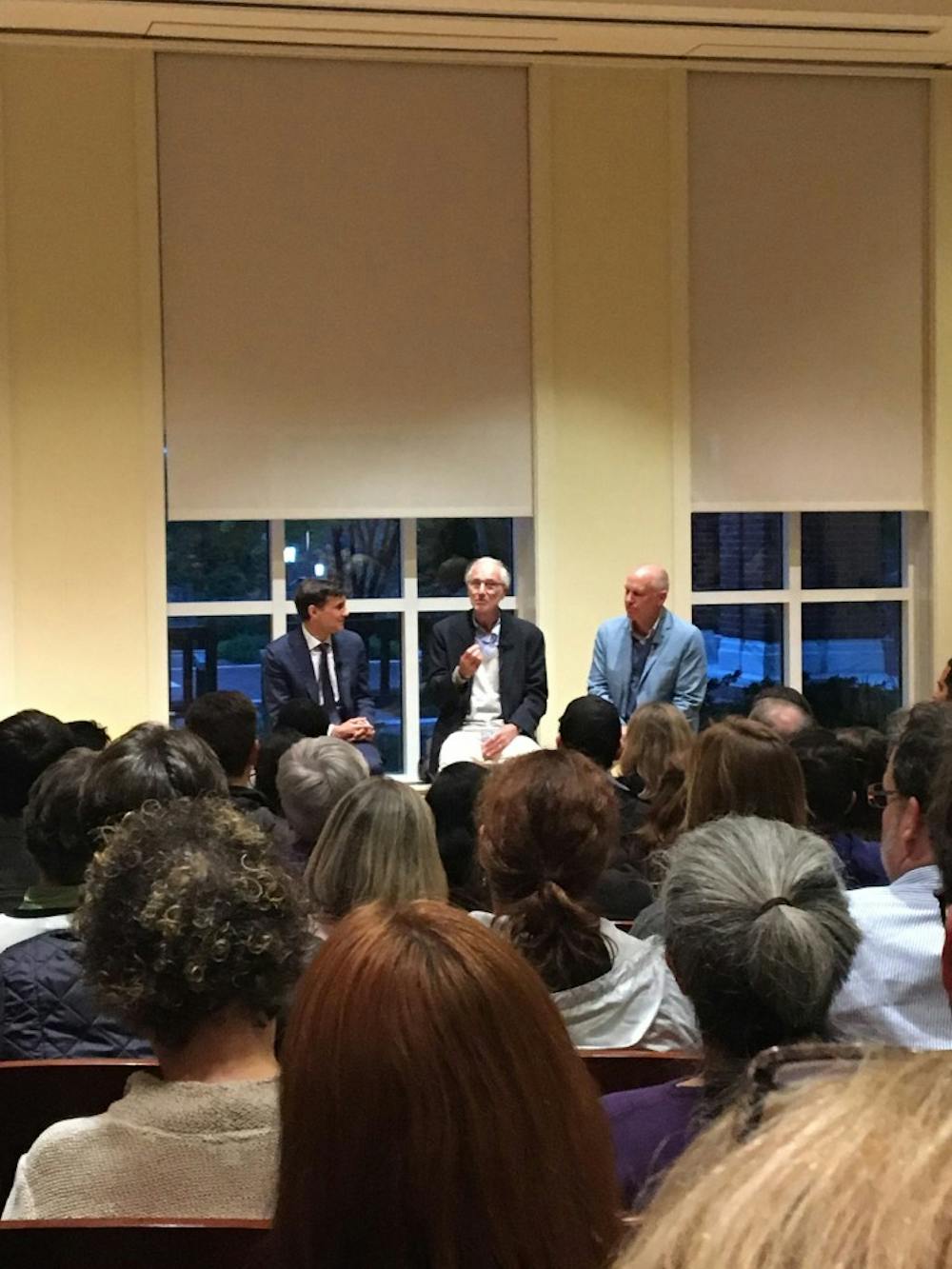Internationally recognized architect Renzo Piano will design the Stavros Niarchos Foundation Agora Institute building for the Homewood Campus. University President Ronald J. Daniels, Piano and Piano’s business partner Mark Carroll spoke at an event in Mason Hall on Monday night. The event was open to Hopkins affiliates and community members, and it focused on Piano’s plans for the upcoming building.
The Agora Institute hopes to provide the Baltimore community with a central location to hold civic discourse and debate current global issues. The name “Agora” comes from the Athenian agora, which in ancient times, was a place for community members to congregate and hold open conversations. The Institute hopes to hold public events to promote democracy and discussion.
The Stavros Niarchos Foundation donated $150 million to sponsor the building’s construction, which will be approximately 40,000 square feet. The new Institute will employ a new director, faculty members, and graduate and undergraduate students.
Piano visited the University to explore various potential locations for the project and the general atmosphere of the campus. The architects spent all day Monday walking around campus to observe the landscape and to be inspired for upcoming designs. Carroll added that because Hopkins is surrounded by nature, this will contribute to the new building’s aesthetic.
“You just have to walk around, and you look at the incredible landscape, trees, vegetation that’s everywhere on this campus. And I think that this nature will generate the shape of the Agora Institute,” Carroll said.
Piano stressed that one of his main focuses for this building will be its interaction with nature. He said that although people don’t like to talk about creating something beautiful, it is an integral part to the building’s function.
“A beautiful place makes a lot of sense. A beautiful place sometimes has a lot to play with nature,” he said.
The new space will host three subgroups of the Agora Institute, including the Academic Anchor, the Agora Lab and the Agora Conversation. Each group will have a different focus and contribute to the overall purpose of the Institute.
Following Piano’s presentation, audience members asked him about his previous projects, including the Centre Georges Pompidou, the New York Times building, the Whitney Museum of American Art and the Los Angeles County Museum of Art (LACMA).
Daniels also asked Piano about some of the issues he faces when he is designing a building, including dealing with conflicting ideas and dissatisfaction with a finished project.
Piano answered by saying that although there are many obstacles when creating a building, it is important to look for ways to improve and ways to build off of previous projects. He also touched on the inherent need for his profession.
“Architecture is a serious job. It is the art of making shelter for human community. It’s the art of designing cities,” Piano said.
He also said that although the world is constantly changing, architecture needs to embrace change and incorporate it into their designs. He acknowledged that this can be controversial because humans are naturally resistant to change, but as an architect he uses his work to celebrate changing times.
Many audience members, including sophomore Mohammed Mumtaz, were impressed with Piano’s work and felt that his role in this project will benefit both Hopkins and the greater city of Baltimore.
“Renzo Piano is obviously really interesting to people around the world. Almost every major city pretty much has his work,” he said. “I wanted to get a new perspective in my studies and I wanted to be inspired.”
Other students, such as Vice President of the Student Government Association, AJ Tsang, said he attended the event because he was eager to learn about the creation of a new space where students could come together.
“What’s super exciting is that Piano’s work has bridged so many communities across the world. I think it’s important that so many people are here to be in the process of giving feedback for what will be a place to bridge communities, not just at Hopkins but in the greater Baltimore area,” he said.
Piano frequently brought up “building bridges” during his presentation. He discussed how it is important for the Institute to help foster productive ideas in order to promote a community driven by collaboration.
“This is a world where we need to build bridges, break down walls and we have to do this together,” Piano said.
Tsang noted that there was a large audience from a variety of backgrounds including students, faculty members, people from the Maryland Institute College of the Arts and people from the Baltimore community.
“I loved how it’s like all of Baltimore came out tonight,” he said.





